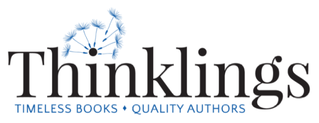|
In my last post, I explained how to write great explicit and implicit exposition for your book. This time, I’m going to explain how to write non-exposition and a great way to combine all three forms of exposition together.
(If you’d like to view these two combined posts in video format, click here. It’s part of our “Advice from an Editor” series on YouTube.)
0 Comments
Today I’m going to be discussing how to write great exposition for your book. But first, let’s establish: what is exposition? It’s a literary device to communicate background information to your reader, whether about the characters, the setting, an event that happened before the story began that the reader needs to know about to understand the plot better, or etc.
(If you’d like to view this post in video format, click here. It’s part of our “Advice from an Editor” series on YouTube.) All books have to start somewhere! But how can you write the opening of your book so that the reader is compelled to keep turning pages? Today I’m going to be discussing what makes a great beginning for your book.
(If you’d like to view this post in video format, click here. It’s part of our “Advice from an Editor” series on YouTube.) In January, we started reposting with permission a series of articles from Deborah’s blog about book ideas that she has had but is unable to write for one reason or another. In other words: here’s some inspiration free for the taking for any writer who’s interested!
This post is Part 3 of 3; you can read Part 1 here and Part 2 here. Last month, we started reposting with permission a series of articles from Deborah’s blog about book ideas that she has had but is unable to write for one reason or another. In other words: here’s some inspiration free for the taking for any writer who’s interested!
This post is Part 2; you can read Part 1 here. Stay tuned for Part 3! This article was first published on Medium.com by Sarah Awa and is being used with permission here.
It’s time for me to address this topic because, unfortunately, I’ve just had my heart broken by a book that started out with excellent disability representation only to crash and burn in the final third. What happened? In broad strokes, the author did not understand the ultimate consequences of disability. That failure, as you will see below, can have a disastrous effect on readers, both disabled and otherwise. As someone who has battled a serious, incurable autoimmune disease for more than 17 years, I care deeply about this topic, and so I’m going to show you how to write disabled and/or chronically ill people* well. But first, let me explain why writing them well is important. This is somewhat of a hard post for me, because these are stories that are dear to me and terribly clever (or have seemed that way to me, at various times), and mostly that I spent a lot of effort on but that never coalesced into books. I’ll go chronologically.
This post first appeared in Deborah's blog.
I ran a setting workshop. Here are my notes, based on experience and research, on how to write a great setting for your book:
In today's world of technology and automation, it is easy to assume that machines can perform almost any task that humans can do. However, there are still some tasks that require a human touch, and proofreading is one of them. While automated tools can help catch some errors, they can never replace the value of a human proofreader. In this blog post, we will discuss the importance of having a human proofreader.
This post first appeared in Deborah's blog.
So, as those who’ve been following my blog know, I’ve been engaging with a lot of Japanese media lately, and especially anime and light novels (with a bit of manga thrown in). As in, I’ve read over 100 Japanese novels in the past six months. This is relevant because in the particular subgenre I read, I’ve noticed a trend. It goes like this: |
Archives
July 2024
Categories
All
|
As an Amazon Associate, we earn from qualifying purchases.










 RSS Feed
RSS Feed
